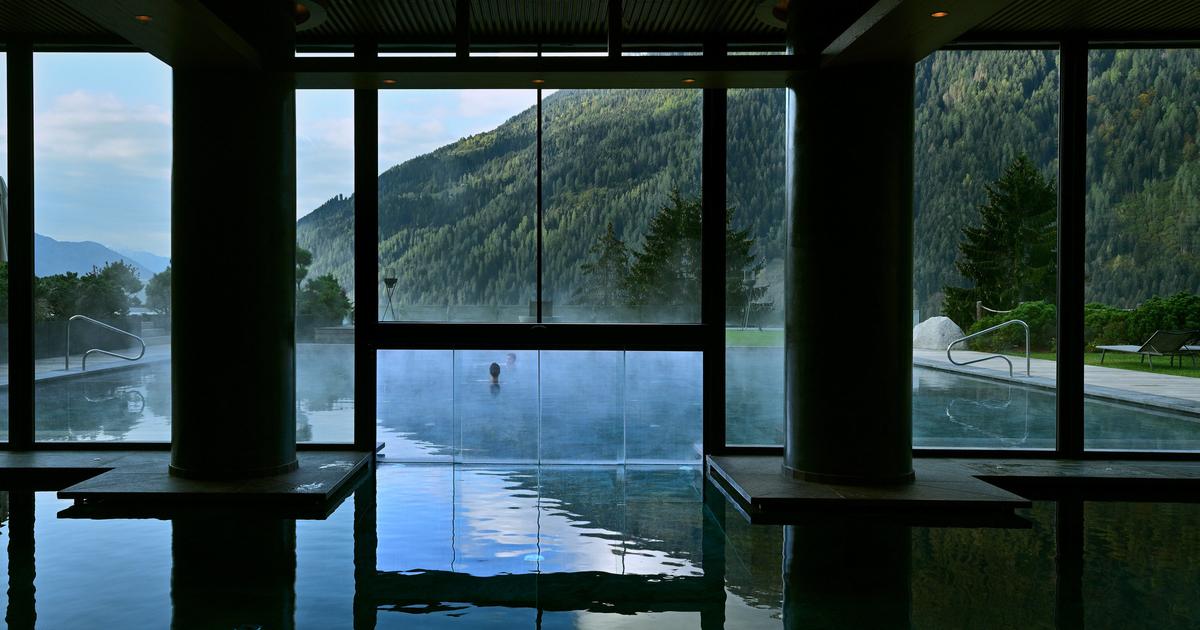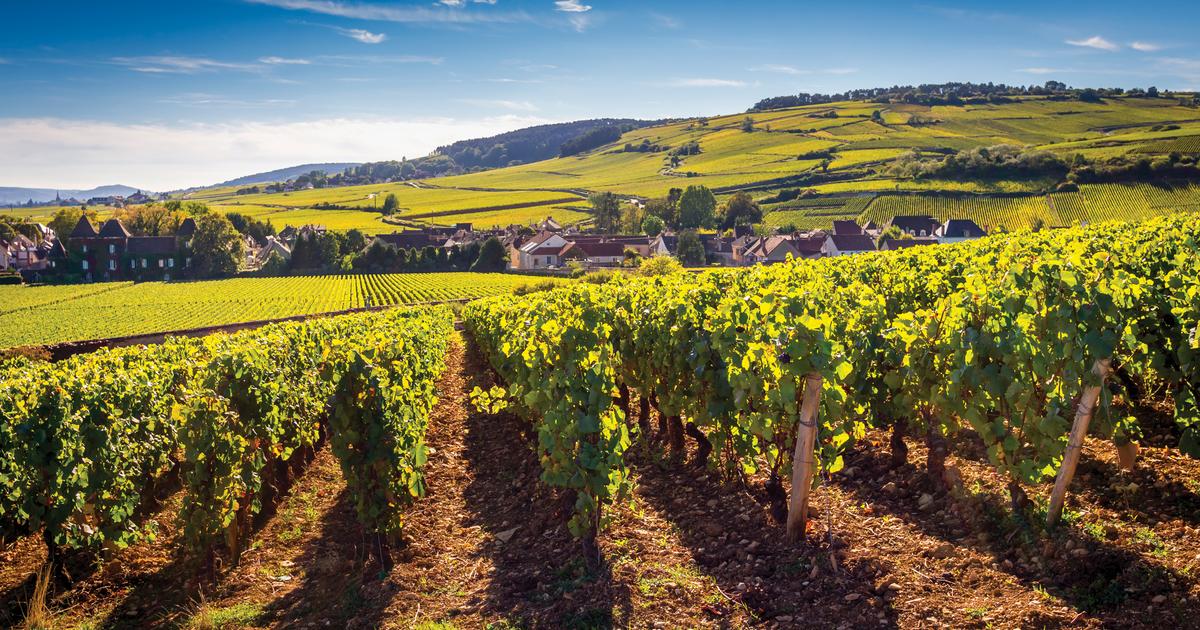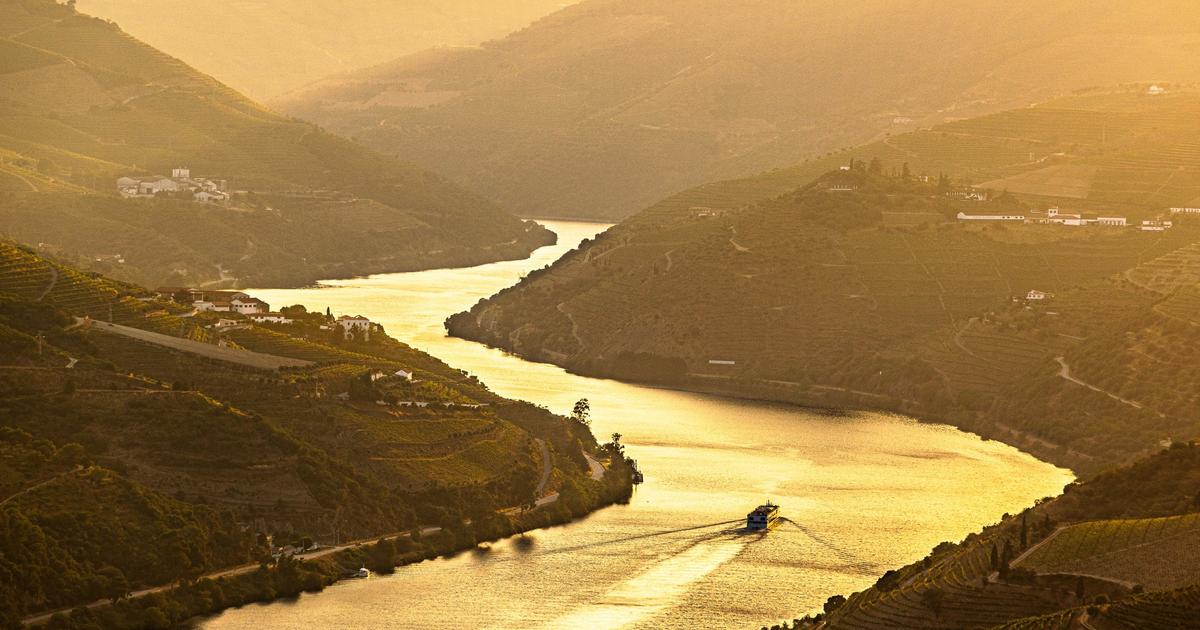When Marqués de Riscal produced its first wine in 1862, the Americans were immersed in the Civil War, Victor Hugo had just published
Les Miserables
and Isabel II was reigning in Spain.
Last September, the winery slaughtered three of the only 16 bottles that remained from that vintage to kick off a tasting that spanned three centuries and showed that history can also be told from a glass of wine.
That 1862 is the oldest bottled wine in Rioja.
With less than 10 degrees of alcohol (today the region's reds range between 13% and 14.5% vol.) and a more than decent color for its age, it was expressed with earthy (mushroom) and tobacco notes. , while its excellent acidity served as the backbone to provide energy and persistence on the palate.
It could have passed very well for a 40 or 50 year old red, but it was 160.
A corridor of the Marqués de Riscal Historical Bottle Store, in Elciego (Álava).Joseph Fox
The collection that Marqués de Riscal treasures in its Historic Botellería is unique in the world and has miraculously remained intact throughout time in the silence and darkness of its underground cellars.
Not only is there no possible doubt about its origin, but its conservation has been impeccable.
The only movements have been aimed at replacing corks from specific items under the supervision of the Regulatory Council.
The winery was born with the desire to produce fine wines capable of aging thanks to the vision of its founder, Guillermo Hurtado de Amézaga (1795-1878), Marquis of Riscal.
Installed in Bordeaux since 1836 to avoid the political turmoil of the time and the Carlist wars, the vibrant commercial life of this French city allowed him to prosper in business and rub shoulders with a society that included the owners of some of its most prestigious
châteaux
.
Very soon, he would have the opportunity to follow in her footsteps by inheriting a wine-producing property from his sister in Elciego, within the current limits of the Rioja Alavesa.
Faced with French glamour, the Riojan wines of the time lacked quality and prestige, but the will to improve on the part of the administration and other producers gave birth to the Médoc Alavés.
This initiative, named after the most famous area of Bordeaux and financed by the Álava Provincial Council, benefited from Hurtado de Amézaga's contacts to hire Cadiche Pineau, oenologist at the then prestigious Château Lanessan, who landed in La Rioja in the summer of 1862, in time to buy barrels, vats and all the necessary material for that first historic harvest.
The color betrays the passage of time.
As the coloring matter precipitates, the ruby tones make their way, then the orange and, finally, the ochres.Joseph Fox
One of the commandments of the Bordeaux philosophy was the stabilization of the wine by aging it in oak barrels for at least two years, which created fixed assets and delayed profits.
Although the wines were a success, the scarcity of resources put an end to the Médoc Alavés.
Not with Riscal, who hired Pineau and continued to apply the French model.
This included the sale of wine through Bordeaux merchants, the cultivation of French varieties alongside local ones, or the habit of having French winemakers, a custom that continued until the mid-1950s.
If the 19th century was particularly turbulent politically, European vineyards had to deal with plagues from America.
After powdery mildew and mildew, the devastation created by phylloxera marked a before and after in the world of wine.
The only effective deterrent to the root-eating insect was to graft the European vines onto American vine stocks, naturally immune to its attack.
Thus, nothing interfered with the flow of sap between the root and the aerial part of the plant in the vines that fed the 19th century red wines.
Cultivation was restricted to the poorest soils, yields were low, and grape berries were small and concentrated.
Only in this way can it be understood that vintages such as 1870, 1876, 1886 or 1899 have amazingly preserved not only their color (1870 could pass for a 1970), but also their presence and volume on the palate, when the most common profile of old Riojas It is made of light and silky reds outlined by acidity.
In Riscal, in fact, the two styles coexist (there is the delicate and subtle expression of an 1871 or the evocative character of a ١٩٢٨), but it is the first that gives the house its differential touch.
Samples of all the vintages made since 1862 are kept in the Marqués de Riscal Historical Bottle Shop. Joseph Fox
The aromas of these centuries-old wines range from powdery and attic notes to much more complex and even baroque expressions: hints of brandy, dried fruit, sweet spices, coffee or chocolate.
At the turn of the century, the 1909 and 1911 vintages, thinner and lighter, show the less depth of the young vines and show the slow reconstruction that followed the phylloxera, although they retained, particularly the 1911, a certain liveliness.
The twenties were full of energy: with fruit on the 22nd;
The 24 is mentholated, round and elegant. From the years of the Republic, the 35 made an impact due to its silkiness, rich nuances, herbal freshness and long finish.
In the Riscal documentary archive, vintage books, detailed descriptions of the different harvests and even characterizations of varieties carried out by French engineers are preserved.
"What there is no written record of is the percentages of varieties that they used in the wines," points out Francisco Hurtado de Amézaga, the technical director of the last four decades and great-great-grandson of the founder.
In the 19th century, it was common to mix grape varieties, including white and red, in the same vineyard.
If Tempranillo has always been present (Hurtado de Amézaga says that the best examples are exceptional), Graciano was the most difficult to recover after phylloxera.
In order not to have to deal with the progressive deterioration of the corks, the oldest bottles are disgorged directly with the help of hot tongs.Joseph Fox
Of those brought from France,
Cabernet Sauvignon
began to gain a certain weight from 1870 and is the one that has had the greatest continuity to this day.
Starting in the twenties, but especially in the forties and fifties, the wines in which it was most present were internally marked as Reserva Médoc or XR (Xtra Reserva).
The paradigm of this style is the 1945, a wide, exultant, very fine, serious wine with an endless finish that gives the characteristic notes of leaves and currant of the variety.
It could pass for a great Bordeaux, but it is, without a doubt, one of the best reds that have ever been produced in Rioja and in Spain.
This indisputable 1945 was the inspiration for, after a period focused on wines with less aging capacity since the late sixties, creating what is considered the first modern Rioja.
Barón de Chirel makes his debut in the 1986 vintage looking at France and successively letting himself be advised by renowned winemakers such as Guy Guimberteau, Paul Pontallier or the current consultant Valérie Lavigne.
With the tasting of five vintages of this red comes the reality check of current times, more 21st century graduations between 13% and 14.5% vol., but also complex vintages with good wickerwork to age like 2001 or 2010 .
More than a century and a half after its founding, Marqués de Riscal is perhaps best known for the Frank Gehry colored cantilevers that greet visitors, but its essence is trapped in each of the more than 140,000 bottles that sleep in its cellars. .
Subscribe to continue reading
Read without limits
Keep reading
I'm already a subscriber









